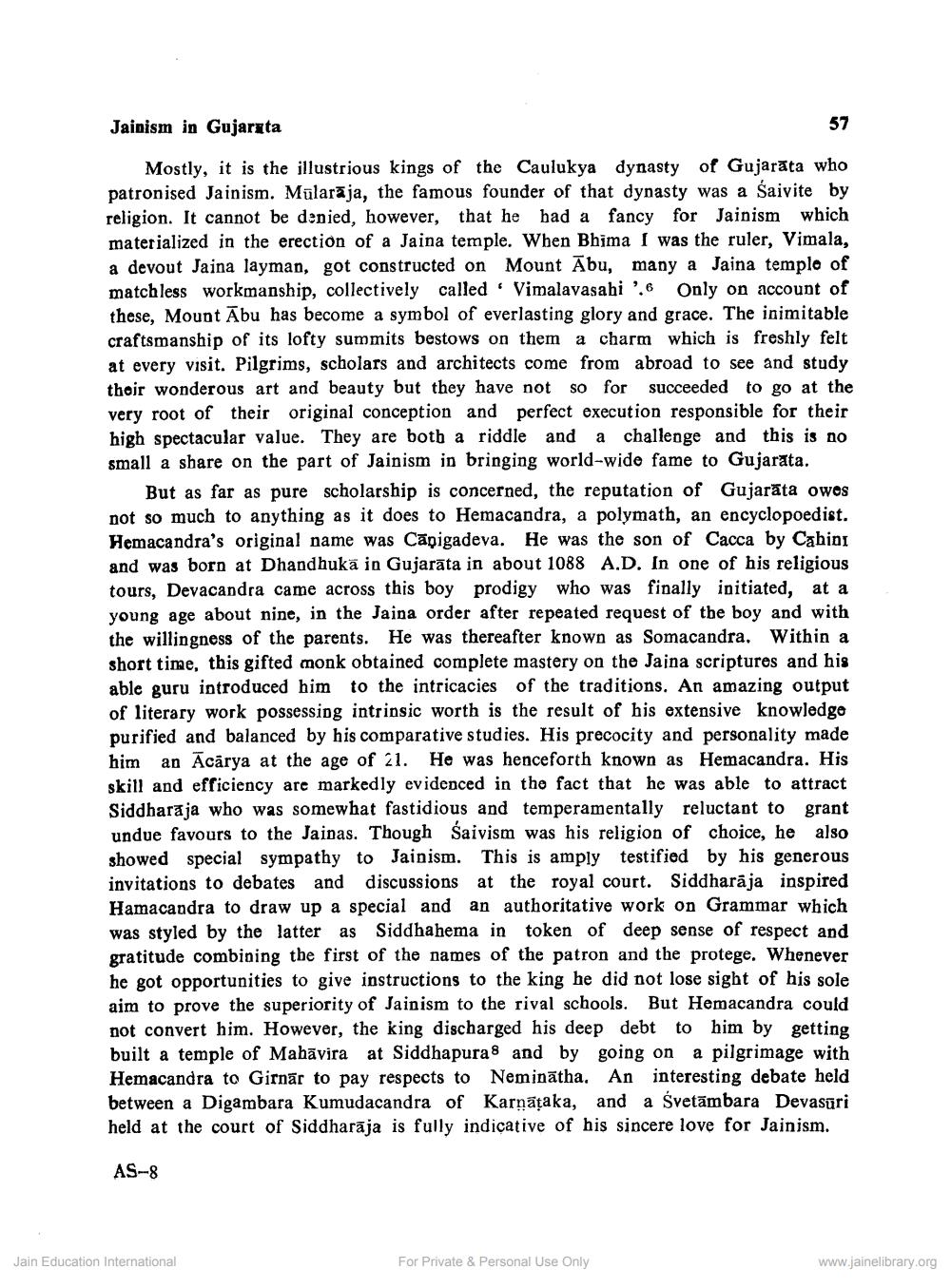________________
Jainism in Gujaryta
57
Mostly, it is the illustrious kings of the Caulukya dynasty of Gujarāta who patronised Jainism. Mūlarāja, the famous founder of that dynasty was a Saivite by religion. It cannot be denied, however, that he had a fancy for Jainism which materialized in the erection of a Jaina temple. When Bhima I was the ruler, Vimala, a devout Jaina layman, got constructed on Mount Abu, many a Jaina temple of matchless workmanship, collectively called ' Vimalavasahi ' 6 Only on account of these, Mount Ābu has become a symbol of everlasting glory and grace. The inimitable craftsmanship of its lofty summits bestows on them a charm which is freshly felt at every visit. Pilgrims, scholars and architects come from abroad to see and study their wonderous art and beauty but they have not so for succeeded to go at the very root of their original conception and perfect execution responsible for their high spectacular value. They are both a riddle and a challenge and this is no small a share on the part of Jainism in bringing world-wide fame to Gujarata.
But as far as pure scholarship is concerned, the reputation of Gujarāta owes not so much to anything as it does to Hemacandra, a polymath, an encyclopoedist. Hemacandra's original name was Cāộigadeva. He was the son of Cacca by Cahini and was born at Dhandhuka in Gujarāta in about 1088 A.D. In one of his religious tours, Devacandra came across this boy prodigy who was finally initiated, at a young age about nine, in the Jaina order after repeated request of the boy and with the willingness of the parents. He was thereafter known as Somacandra. Within a short time, this gifted monk obtained complete mastery on the Jajna scriptures and his able guru introduced him to the intricacies of the traditions. An amazing output of literary work possessing intrinsic worth is the result of his extensive knowledge purified and balanced by his comparative studies. His precocity and personality made him an Ācārya at the age of 21. He was henceforth known as Hemacandra. His skill and efficiency are markedly evidenced in the fact that he was able to attract Siddharaja who was somewhat fastidious and temperamentally reluctant to grant undue favours to the Jainas. Though Saivism was his religion of choice, he also showed special sympathy to Jainism. This is amply testified by his generous invitations to debates and discussions at the royal court. Siddharāja inspired Hamacandra to draw up a special and an authoritative work on Grammar which was styled by the latter as Siddhahema in token of deep sense of respect and gratitude combining the first of the names of the patron and the protege. Whenever he got opportunities to give instructions to the king he did not lose sight of his sole aim to prove the superiority of Jainism to the rival schools. But Hemacandra could not convert him. However, the king discharged his deep debt to him by getting built a temple of Mahāvira at Siddhapura8 and by going on a pilgrimage with Hemacandra to Girnār to pay respects to Neminātha. An interesting debate held between a Digambara Kumudacandra of Karnāțaka, and a Svetāmbara Devasūri held at the court of Siddharāja is fully indicative of his sincere love for Jainism.
AS-8
Jain Education International
For Private & Personal Use Only
www.jainelibrary.org




